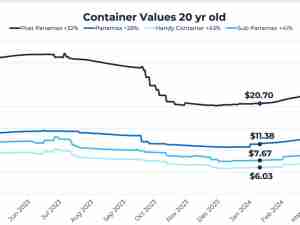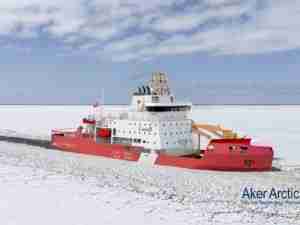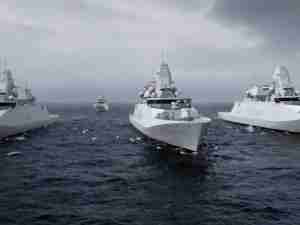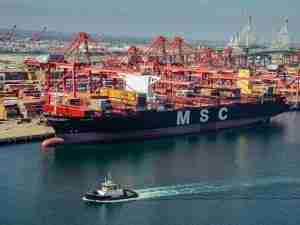By George Lauriat, AJOT
DEFINING THE CHALLENGES
The box business in North America, the international movement of freight in ocean containers to and from North America, is challenged by economic, infrastructural, environmental, social and political issues that (with apologies to Massachusetts author, Sebastian Junger) are like a 'perfect storm' racing to tumultuous convergence'over a not too distant horizon. It is a convergence, as Massport's Maritime Director Mike Leone said, of 'expense items' that include increases in fuel prices for both ship and landside transportation, to the 'time is money cost' of disappointing marine terminal productivity, and highway gridlock and railroad congestion. Taken collectively, these issues and related problems, such as the new security regime and crumbling highway infrastructure, threaten the future viability of the entire supply chain.
IT'S THE SUPPLY CHAIN STUPID
Peter Keller, President of NYK North America, in an interview with the AJOT, when he was asked what he thought was the principle challenge facing the box industry today, succinctly answered, 'it's the supply chain stupid,' (Editor's note: referring to the 1992 presidential campaign slogan, 'It's the economy stupid,' attributed to James Carville).
Keller, who has been in the industry for nearly four decades, was trying to make the point of the linkage between the concerns like terminal productivity and landside congestion.
'What is happening, is that we [the steamship line/terminal industry] realize that Yes, we need more productivity from our terminals; and Yes, we need infrastructure improvements but we also must be better stewards of the assets entrusted to us,' Keller said.
As Keller points out, terminal productivity is a major issue of two scores; first the almost tsunami like impact of box traffic on both the economy and infrastructure; secondly, the socio-economic impact.
That is associated with ILWU contract negotiations with the Pacific Maritime Association (PMA).
'Our productivity is 3,000-4,000 boxes per/acre against 9,000 pa to 10,000 pa for the rest of the world and over 20,000 pa in some ports. On the West Coast 20-30 moves per hour [gantry cranes] and upwards, 30-35 moves in some East Coast ports, this is well behind the 90 moves in other parts of the world,' Keller said.
Keller points out that even if shifts were added and productivity on the terminal improved that it would not be enough, particularly considering that box demand (especially on the West Coast) is forecast to double by 2030.
Keller points out, 'Even if we speed up terminal throughput by adding extra shifts, we have to match that with more from truck, rail and warehouse shifts. The new reality is that with the global supply chain, you are only as fast as the slowest link.'
Bill Rooney, Managing Director for Hanjin North America, echoes many of Keller's concerns: 'Based on what we already know (box forecasts aside), the '08 ILWU negotiations are an immense challenge, not only for the West Coast, but the East Coast as well. We need this contract in place to enable us to address terminal productivity and other concerns.'
The ILWU issue is complex because it is at the heart of any improving of terminal throughput. How much terminal automation is acceptable to the ILWU, (steamship lines and terminal operators are taking a very careful look at APM's ' the terminal arm of AP Moller/Maersk - highly automated new terminal in Norfolk, VA) and more importantly at what cost, is a real question for West Coast box terminal operators and steamship lines. The negotiations are also sociological in nature. Rare are there industrial negotiations where members of the work force make more money than their 'executive' counterparts in management. Such situations sometimes result in 'fairness & retaliation' dynamics (Simon Gaechter & Ernst F










